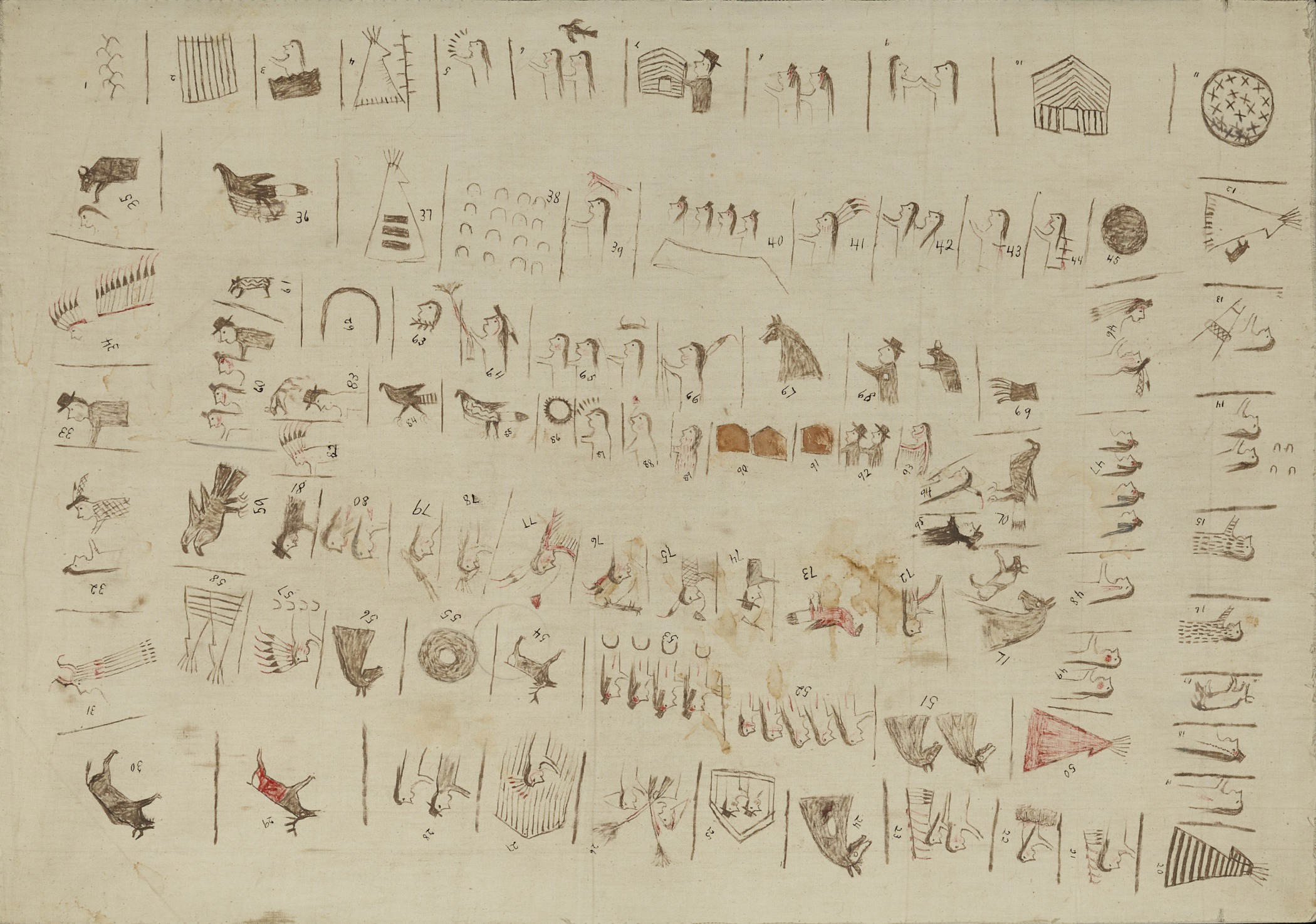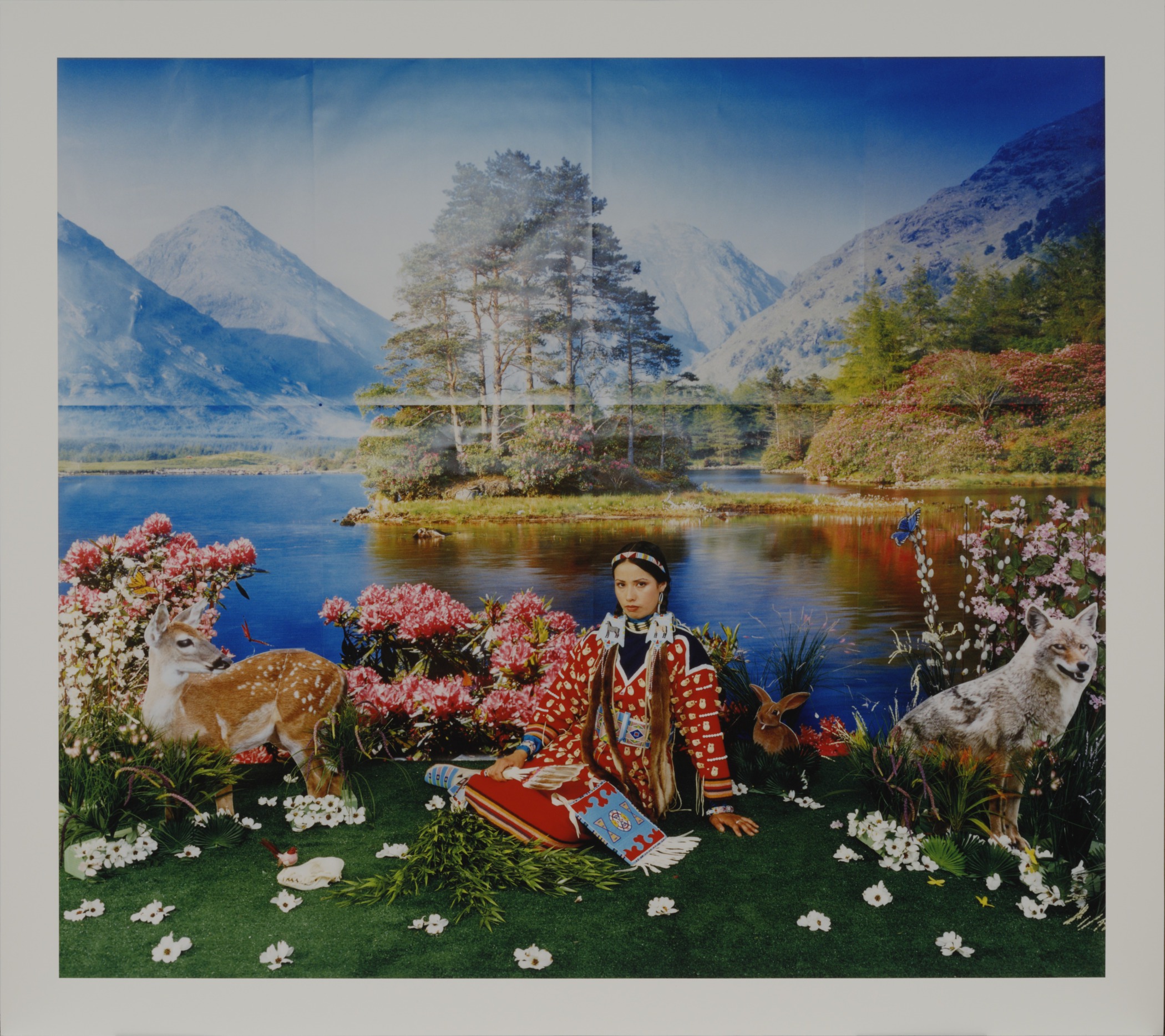Dwayne Wilcox, American (Oglala Lakota), born 1957
From Here to Eternity
- 2008
- Crayon, colored pencil, and felt-tipped pen on ledger paper
- 9 5/8 × 15 1/2 in.
Hood Museum of Art, Dartmouth College: Purchased through the Guernsey Center Moore 1904 Fund; 2008.59.3. ©Dwayne Wilcox
visibilityLook & DiscussThis modern drawing was inspired by a unique Plains art form called ledger drawing. A ledger is a book filled with lined paper that was used for record keeping. White settlers, traders, and soldiers used ledgers in the 19th century. Recognizing that ledger books were used to record important information, Plains cultures adopted them to record heroic deeds, like battles between Natives Americans and European Americans, as well as nostalgic scenes of pre-reservation life.
Dwayne Wilcox, a contemporary Oglala artist, pays homage to this historic art form by using ledger paper for his drawings. In this four-part composition, he presents a visual narrative of the transition from pre-reservation life to the present-day reality of many Native Americans.
Explore the Object
In the first panel, located in the upper left, Wilcox depicts a Native American encampment prior to European contact.
The second panel, in the upper right, depicts Native Americans fighting for “what little they had to lose—everything.”
The third panel, in the lower left, shows a reservation-bound Native American couple with the man holding a box containing government rations.
The fourth panel, in the lower right, alludes to the disproportionate number of Native Americans who have served in the US military, relative to all other ethnic groups. As Wilcox states, “A lot of young Native boys are fighting for their country’s freedom and they still don’t have their freedom, and there’s no American dream waiting for them when they return.”
related object
Dwayne Wilcox often uses humor and irony in his work as he considers US history from a Native American perspective.
Dwayne Wilcox, American (Oglala Lakota), born 1957, Best Two Outa Three, 2008. Crayon, graphite, colored pencil, and felt-tipped pen on ledger paper, 11 7/16 × 17 11/16 in. Hood Museum of Art, Dartmouth College: Purchased through the Guernsey Center Moore 1904 Fund; 2008.59.7. ©Dwayne Wilcox
In this drawing, artist Dwayne Wilcox shows a Plains Indian warrior playing “Rock ‘em Sock ’em Robots” (an old time boxing game for children) with General George Custer. The object of the game is to “knock the block off,” or pop up the head, of the opponent’s robot. Custer’s troops were defeated by Plains Indians at Little Big Horn, a battle known to Native Americans as the Battle of Greasy Grass.
In this image, who has won? Who has lost?
Dwayne Wilcox’s drawing is called Best Two outa Three.
Who is asking to play again? What do you think will happen as a result?
How does this reflect what happened in American history?
With this playful image, Dwayne Wilcox asks us to consider, “What would happen if Native Americans and European Americans could have a ‘do over’?”
Meet the artist
Dwayne “Chuck” Wilcox has no formal art training but has been a full-time artist since 1987. He uses ledger paper, the first paper to make its way to the Great Plains, to explore American history from a Native American point of view.
He is a member of the Oglala Lakota and was born and raised in South Dakota. He and his wife have served in the military and lived all over the United States.





